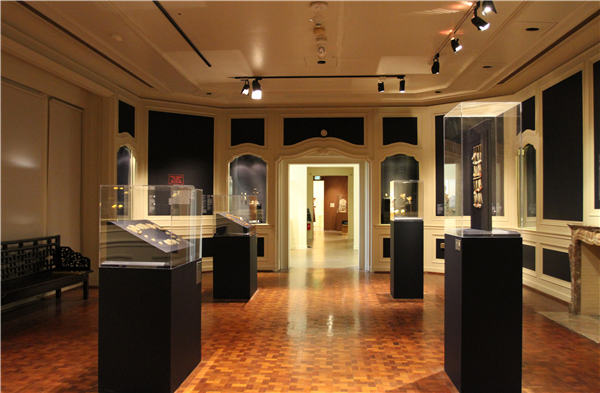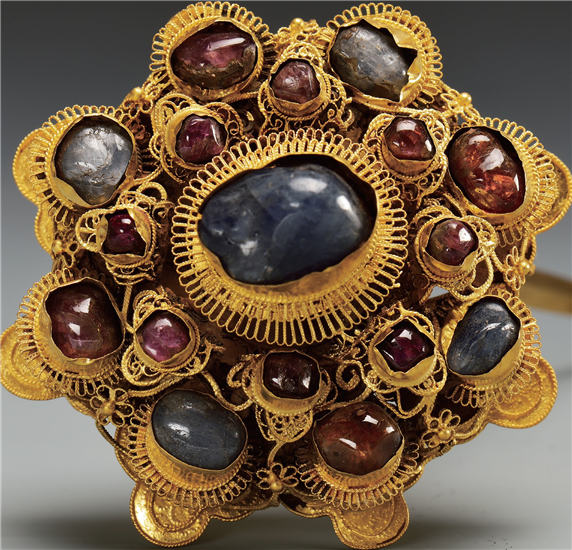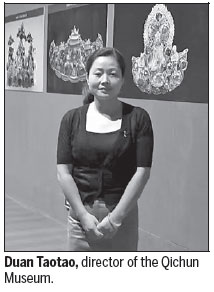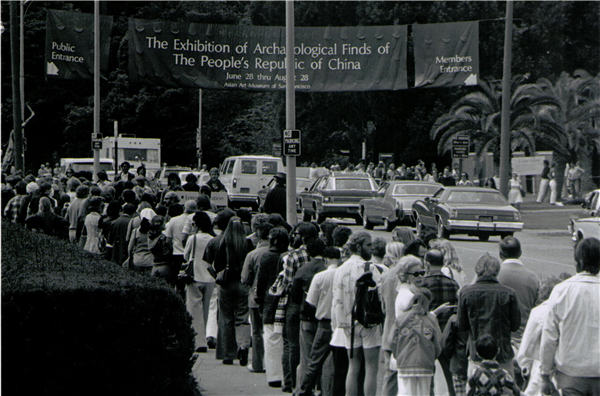DepthReading
Treasures on the global stage

Wherever you are on the planet, chances are that one of these days you'll be able to admire the regalia of China's kings and queens on your own doorstep.
Set off by the dark tone inside the exhibition hall, the glitter and glamour of the gold accessories announced their regal existence, in a way their owners must have done half a millennium ago.
They once belonged to the vassal kings and queens who lived in China during the Ming Dynasty (1368-1644), a time when the privileged class flaunted its immense wealth, through something that was shamelessly pretentious yet unabashedly beautiful: gold.
However, what the spoiled kings and queens probably never imagined was that one day the treasures they had prepared to remain with them in their eternal resting place would end up for public gaze on the other side of the Earth. Most of the visitors who saw the gold crowns, hairpins and other hair and clothing decorations, for both men and women, that were displayed there had never had contact with luxury as defined by ancient Chinese. Many were left gasping.
"It was a visual feast that made people dream," says Duan Taotao, director of the Qichun Museum in Hubei province, which boasts among its collection one of China's best batch of Ming Dynasty gold accessories.
In 2015 and 2016, the cream of the Qichun Museum collection was on view at the John and Mable Ringling Museum of Art in Sarasota, Florida, before traveling to the University of Southern California Pacific Art Museum in Los Angeles.
"Back even five years ago, it would have been unthinkable (for the gold accessories to be shown in a foreign country)."
Such exhibitions have become more prevalent in recent years, a reflection of the government's desire to strengthen cultural exchanges between China and the rest of the world.
For 27 years Qian Wei has worked with Art Exhibitions China, a governmental body whose task, among other things, is to organize exhibitions that put Chinese archaeological and cultural heritage under the spotlight overseas.
"It's a long story that started in 1973, when, at the proposal of a renowned Chinese historian, the central government decided to put together an exhibition that amounted to a grand showcase of Chinese civilization," Qian, 50, says.
It was with that exhibition that Arts Exhibitions China was founded.
"It was an ambitious goal, but people involved, whose names constituted a who's who of the Chinese archaeological world, managed to tell the story with about 200 exhibits, all national treasures unearthed from every corner of the country.
"And it was made clear from the beginning that the target audience would be foreigners. Between 1973 and 1978 the exhibition traveled to 16 countries in Europe, North America and Southeast Asia.

The exhibition's first stop was the Petit Palais in Paris, Qin says. It was also shown in Bucharest, the capital of Romania, a country that was friendly with the People's Republic of China, founded in 1949, when there was still a lot of hostility around.
There were three stops for the show in the United States: the National Gallery of Art in Washington, the Nelson-Atkins Museum of Art in Kansas City and the Asian Art Museum in Los Angeles, a city with a high Chinese American population.
"The relationship between China and the US, which reached freezing point in the 50s and 60s, started to thaw in the early 1970s," Qian says.
"What was dubbed as ping-pong diplomacy, the exchange of table tennis players between the two countries, contributed to this warming-up, and it was hoped that the exhibition could do the same."
Today the exhibition, titled Treasures of China, is still on the road, the last two stops being in Latvia and Lithuania, the first two Baltic Sea countries it has been to, in late 2016 and early 2017. There are plans for it go to Saudi Arabia around September.
The exhibits have undergone repeated changes, thanks mostly to the many archaeological discoveries made since the 1970s, but the mission is unchanged, Qian says.
"These days we are trying to reach those places with little previous contact with Chinese culture. It's hoped that the display becomes something of an initiation for the locals."
If the Treasures of China exhibition has summoned up some of the best from the entire country, then there is one Chinese museum that can mount monumental shows drawing solely upon its own collection. That is the Palace Museum in Beijing, also known as the Forbidden City Museum. Royal residences for successive emperors during the Ming and Qing dynasties (1368-1911), the sprawling 720,000 square meters is home to numerous treasures amassed down the centuries by men who ruled over one of the world's largest empires.
"Thanks to this enviable collection, we were eyed by museums and art institutions across the world," says Ma Shengnan, a museum researcher who specializes in palace life and rituals.
"From all of them we pick the most renowned for cooperation."
These have included the Royal Ontario Museum and the Vancouver Art Gallery in Canada, both stops for a grand 2014 display. With a total of 414 exhibits, the show presented a comprehensive review of court life during the Ming and Qing era and was the largest exhibition the Palace Museum had ever held in North America.
Another one was the National Gallery of Victoria in Melbourne, where, between March and June 2015, an exhibition focusing on the life and rule of the longest-reigning Qing emperor Qianlong was held.
And it is not just a one-way street, Ma says.
"On many occasions we are engaged in exchange shows with a foreign museum, whereby we send out an exhibition featuring part of our own collection and get one in return. The themes of the two exhibitions share a certain relevancy, which often means a royal connection."
Between October 2014 and January 2015 more than 100 pieces of treasure, all collected or commissioned by Chinese emperors, were on view at the Virginia Museum of Fine Arts in Richmond, Virginia. The US museum's collection of Faberge eggs and decorative art works, once owned by Nicholas II of Russia, were guests at the Palace Museum between April and July 2016.

The Palace Museum cites many forms of collaboration that have culminated with an exhibition. Starting from 2002, the museum linked with the World Monuments Fund in New York, a private, nonprofit international organization dedicated to preserving historic architecture and cultural heritage sites worldwide.
For the next six years the two worked together to preserve the interior decorations of a Qing Dynasty building inside the Forbidden City. The building, named Juan Qin Zhai, or Room of Respite, is in a corner of the retirement garden Emperor Qianlong built for himself in the late 18th century.
Then, in 2009, upon the completion of the Juan Qin Zhai project, the museum and the World Monuments Fund unveiled the second phase of their cooperation - this time on the protection and conservation of the entire Qianlong garden, a project due to come to fruition in 2020.
"Based on what we had accomplished together, the Palace Museum organized the exhibition The Emperor's Private Paradise: Treasures from the Forbidden City, which toured three US Museums (the Peabody Essex Museum, the Metropolitan Museum of Art and the Milwaukee Art Museum) between 2010 and 2011," the museum says.
Most of the time, the installation work was done by the Chinese staff.
"There are very few foreign museums with staff experienced enough to handle Chinese antiques, especially delicate ones, paintings for example," Ma says.
Qian of Art Exhibitions China believes that a comparative study can help draw audiences.

"In 2009 and 2010 we teamed up with the cultural ministry of Italy for an exhibition that simultaneously looked into ancient Roman civilization and the one formed in China during the Qin and Han period (221 BC-220 AD).
"With Roman marbles standing right beside the terra cotta warriors, the entire exhibition hall appeared to me like an echo chamber.
"The audience was propelled to break into new territory by what they already knew, and at the same time prompted by the unfamiliar to re-examine what they thought they had known," Qian says.
"This explains the success of the exhibition, which was first shown in Beijing and Luoyang, Henan province, and then in Milan and Rome."
In 2013 Qian went to Bucharest with the Treasures of China exhibition, which were in the Romanian capital for the second time, following the visit in 1973.
"At the opening, the curator of the National Museum of Romania, who was about to retire, came up to me and said, 'Having this show here, right now, is personally significant.'
"Through the glass wall of the exhibition cases, I could see not only familiar exhibits, but also that young, fascinated archaeology student who had been there 40 years earlier."
Category: English
DepthReading
Key words:
